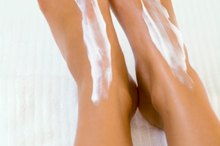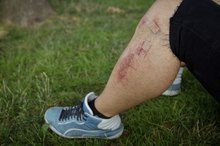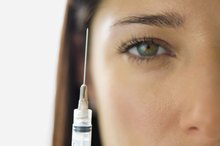What does fact checked mean?
At Healthfully, we strive to deliver objective content that is accurate and up-to-date. Our team periodically reviews articles in order to ensure content quality. The sources cited below consist of evidence from peer-reviewed journals, prominent medical organizations, academic associations, and government data.
The information contained on this site is for informational purposes only, and should not be used as a substitute for the advice of a professional health care provider. Please check with the appropriate physician regarding health questions and concerns. Although we strive to deliver accurate and up-to-date information, no guarantee to that effect is made.
Triamcinolone Acetonide for Treatment of Ringworm
Ringworm is an infection of the skin that is caused by a fungus that can be picked up from practically anywhere 1. This infection is also contagious and can be passed on from person to person simply by touching the infection. Treatment for most cases of ringworm involves the use of a topical anti-fungal creams. Triamcinolone acetonide is not recommended for treatment of ringworm 3.
Definition
Triamcinolone Acetonide, or simply Triamcinolone, is a topical cream used to treat fungal infections 3. It is a corticosteroid available only by prescription that works to relieve the itching, redness, dryness, crusting, scaling and inflammation associated with certain skin infections.
Brands
Ketoconazole Cream Uses
Learn More
Prescription brands of Tramcinolone topical medication include Kenalog, Kenacort, Aristocort and Atolone. These medications, however, are not recommended for use on the average ringworm infection. Alternative over the counter treatments for ringworm include topical anti-fungal creams like Micatin, Tinactin, Monistat-Derm, Lotrimin and Lamisil.
Application
Triamcinolone most often comes in the form of a cream or ointment, but can also come as a liquid or aerosol 3. Application is the same no matter what form the medication comes in. A thin layer should be applied to the infected area two to four times a day. The area should not be bandaged and should stay as dry as possible because fungus thrives in damp, warm places.
- Triamcinolone most often comes in the form of a cream or ointment, but can also come as a liquid or aerosol 3.
- The area should not be bandaged and should stay as dry as possible because fungus thrives in damp, warm places.
Prognosis
Jock Itch Creams
Learn More
Signs of infection should begin within the first week and the infection should clear within four weeks. Should the skin infection show no signs of improvement after using the topical cream for four weeks, oral anti-fungal medications may be prescribed.
Complications
Common side effects include overly dry skin, itching, burning and change of skin color; these usually go away after the first week of using the medication. More severe allergic reactions may include blurry vision, changes in menstruation, easy bruising, excessive hair growth, impaired wound healing or swelling of the infected area.
Related Articles
References
Writer Bio
Jaclyn Castek is a freelance writer from Tampa, Fla. She has been a news writer for several newspapers and has written articles for a number of regional magazines. Castek received a Bachelor of Arts in journalism from the University of South Florida and is currently pursuing a master's degree in library and information science.








